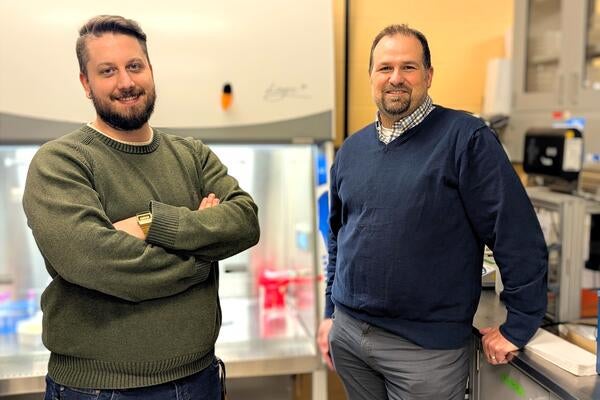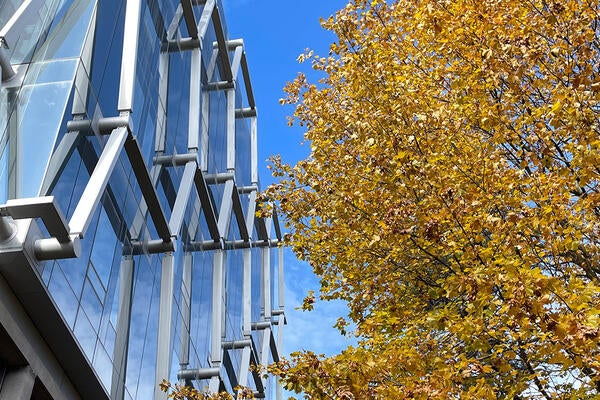
Scientists create 'artificial leaf' that turns carbon dioxide into fuel
Scientists have created an “artificial leaf” to fight climate change by inexpensively converting harmful carbon dioxide (CO2) into a useful alternative fuel

Scientists have created an “artificial leaf” to fight climate change by inexpensively converting harmful carbon dioxide (CO2) into a useful alternative fuel
By Media RelationsScientists have created an “artificial leaf” to fight climate change by inexpensively converting harmful carbon dioxide (CO2) into a useful alternative fuel.
The new technology, outlined in a paper published today in the journal Nature Energy, was inspired by the way plants use energy from sunlight to turn carbon dioxide into food.
“We call it an artificial leaf because it mimics real leaves and the process of photosynthesis,” said Yimin Wu, an engineering professor at the University of Waterloo who led the research. “A leaf produces glucose and oxygen. We produce methanol and oxygen.”

Waterloo engineering professor Yimin Wu. Photo: Brian Caldwell, University of Waterloo
Making methanol from carbon dioxide, the primary contributor to global warming, would both reduce greenhouse gas emissions and provide a substitute for the fossil fuels that create them.
The key to the process is a cheap, optimized red powder called cuprous oxide.
Engineered to have as many eight-sided particles as possible, the powder is created by a chemical reaction when four substances – glucose, copper acetate, sodium hydroxide and sodium dodecyl sulfate – are added to water that has been heated to a particular temperature.
The powder then serves as the catalyst, or trigger, for another chemical reaction when it is mixed with water into which carbon dioxide is blown and a beam of white light is directed with a solar simulator.
“This is the chemical reaction that we discovered,” said Wu, who has worked on the project since 2015. “Nobody has done this before.”
The reaction produces oxygen, as in photosynthesis, while also converting carbon dioxide in the water-powder solution into methanol. The methanol is collected as it evaporates when the solution is heated.

An hour-long chemical reaction creates the engineered red powder that is the key to new technology to turn carbon dioxide into fuel.
Next steps in the research include increasing the methanol yield and commercializing the patented process to convert carbon dioxide collected from major greenhouse gas sources such as power plants, vehicles and oil drilling.
“I’m extremely excited about the potential of this discovery to change the game,” said Wu, a professor of mechanical and mechatronics engineering, and a member of the Waterloo Institute for Nanotechnology. “Climate change is an urgent problem and we can help reduce CO2 emissions while also creating an alternative fuel.”
Wu collaborated on the paper, Facet-dependent active sites of a single Cu2O particle photocatalyst for CO2 reduction to methanol, with Tijana Rajh and other researchers at the Argonne National Laboratory in Illinois, as well as scientists at California State University, Northridge, and the City University of Hong Kong.

Engineering master's student Nayeema Nonta (left), one of the three paper authors, and her supervisor, Dr. Sirisha Rambhatla, in a large server room with the computer power needed to develop their new LLM training technique. (University of Waterloo)
Read more
Waterloo researchers develop highly efficient AI training system that paves the way for cheaper, greener “intelligent partners”

Read more
Engineering researchers team up to tackle the plastics pollution problem with microbial innovation and engineering design

Read more
15 University of Waterloo researchers have been named to the annual Highly Cited Researchers™ list for significant contributions to their specific fields of research
The University of Waterloo acknowledges that much of our work takes place on the traditional territory of the Neutral, Anishinaabeg, and Haudenosaunee peoples. Our main campus is situated on the Haldimand Tract, the land granted to the Six Nations that includes six miles on each side of the Grand River. Our active work toward reconciliation takes place across our campuses through research, learning, teaching, and community building, and is co-ordinated within the Office of Indigenous Relations.